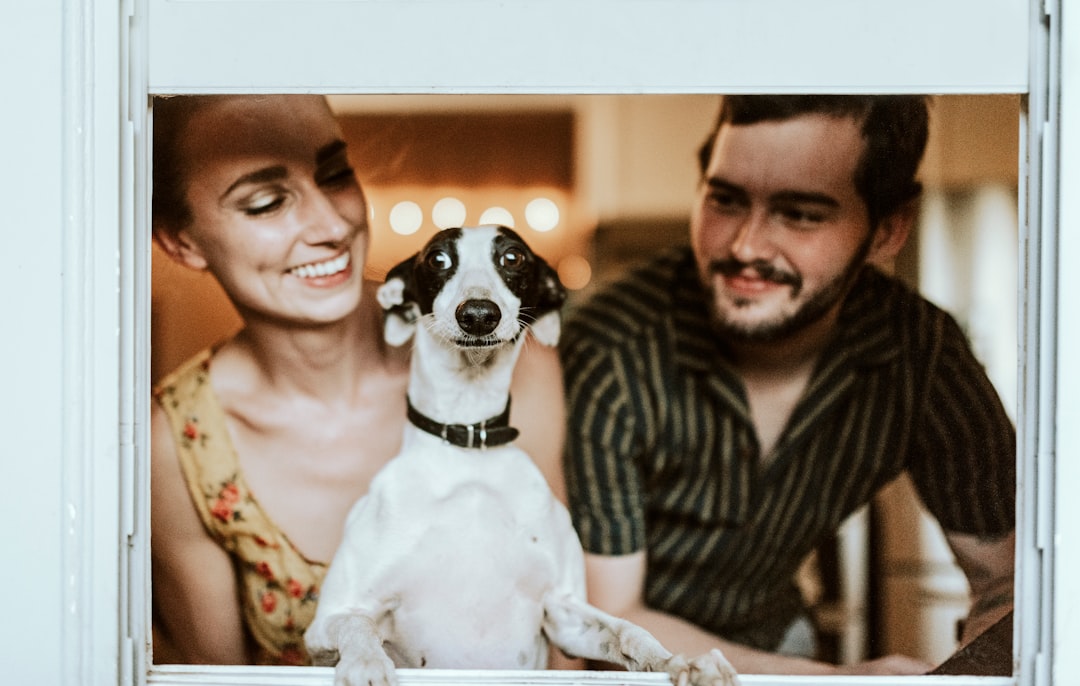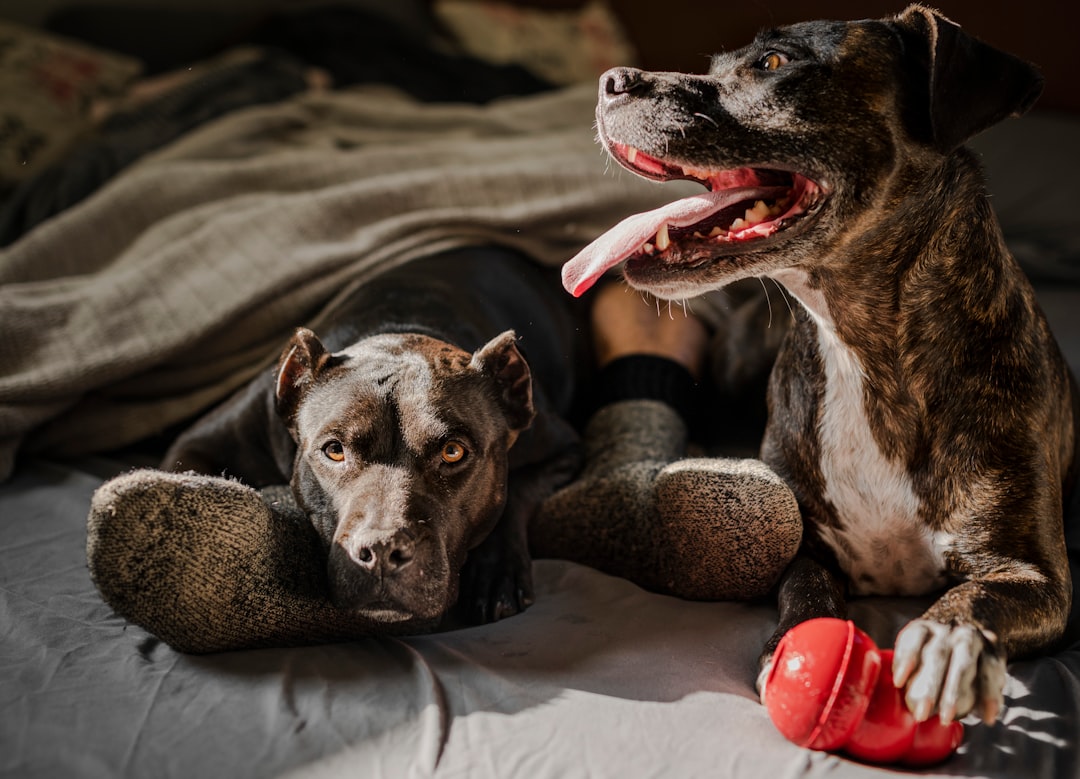If you’ve ever found yourself asking, “Why are my dog’s eyes red?” you’re not alone—many dog owners face this puzzling predicament. Red eyes can signal everything from allergies to infections, making it vital to decipher what’s going on behind those soulful peepers. In this post, we’ll unveil the common causes and treatments for red eyes in dogs, ensuring you’re well-equipped to tackle the issue head-on and help your furry friend see the world clearly again. Grab your best detective hat, and let’s get to the bottom of those crimson shades!
Understanding Red Eyes in Dogs

Ever glanced at your furry friend and thought, “Why are my dog’s eyes red?” It’s a common concern among pet parents and a valid one, as red eyes can indicate a range of issues, from minor annoyances to serious health concerns.
So, what causes those scarlet peepers? Here’s a quick breakdown:
- Allergies: Just like us, dogs can suffer from seasonal allergies, leading to redness and irritation.
- Infections: Bacterial or viral infections can cause red, watery eyes. Think of it as a doggy conjunctivitis!
- Injury: Scratches or irritants in the eye can trigger inflammation and redness.
- Glaucoma: This serious condition can cause eye redness along with other concerning symptoms.
Understanding the “why” behind those ruby orbs is essential. With careful observation and a dash of knowledge, you can keep your pooch’s eyes healthy and bright! Remember, the next time you ask, “Why are my dog’s eyes red?” you might just save a trip to the vet.
Common Causes of Red Eyes in Dogs

So, why are my dog’s eyes red? There’s a plethora of reasons that could have your furry friend looking like they just binge-watched a horror movie. Here’s a rundown of the most common culprits:
- Allergies: Just like humans, dogs can have allergies to pollen, dust, or food, leading to those discolored peepers.
- Conjunctivitis: An inflammation of the outer membranes of the eye. This could be due to infections, allergies, or irritants.
- Injury: A scratch or trauma can trigger redness. If they’re chasing squirrels more forcefully than usual, it might be time for a check-up.
- Glaucoma: Increased pressure in the eye is no joke and can lead to serious consequences if untreated.
- Entropion: A condition where the eyelids roll inward, causing irritation.
| Cause | Symptoms |
|---|---|
| Allergies | Itching, watery eyes |
| Conjunctivitis | Swelling, discharge |
| Injury | Swelling, pain |
| Glaucoma | Squinting, tearing |
| Entropion | Redness, rubbing of the eyes |
In summary, understanding the reasons that lead you to ponder, “Why are my dog’s eyes red?” can help you pinpoint the issue quickly! Always keep an eye (pun intended) on your pup’s eye health, because that cutie deserves nothing but a clear view of the world!
Signs Accompanying Red Eyes

If you’re asking yourself, Why are my dog’s eyes red? it’s important to pay attention to other signs that could accompany this alarming symptom. A dog’s eyes don’t usually get red for no reason, so time to channel your inner detective.
Here are some signs to watch for:
- Excessive Tearing: If you see pools of tears but your dog’s not auditioning for a drama, this could indicate irritation.
- Squinting or Blinking: Is your pup suddenly more expressive with their eyelids? Squinting can suggest discomfort.
- Discharge: Any gooey or crusty buildup? That’s a red flag (pun intended).
- Behavior Changes: If your furry friend is less playful or more reserved than usual, something’s up!
- Swelling or Redness of the Eyelids: This adds a dramatic flair to the red-eye issue.
So, before you panic, assess these signs and ask, Why are my dog’s eyes red? It could lead you to a clearer understanding and help save the day!
Diagnosing the Underlying Issue
So, you’ve spotted some alarming crimson in those big, puppy eyes. You’re probably wondering, “Why Are My Dog’s Eyes Red”? Don’t fret – here are a few steps to help you play detective!
- Observe Symptoms: Note any accompanying signs like swelling, discharge, or excessive tearing.
- Consider History: Have there been any recent activities that could cause irritation? (Think allergies, foreign objects, or the infamous poke in the eye from an enthusiastic playdate.)
- Check for Behavior Changes: If your furball is acting more grumpy than usual or insists on squinting like a Hollywood star, that’s a red flag!
- Veterinary Assessment: If at-home sleuthing doesn’t solve the mystery, a vet visit is essential. They’ll likely run tests, such as:
- Eye Examination: Using a specialized scope to check for issues.
- Tear Production Tests: To see how well your dog’s eyes lubricate.
- Fluorescein Staining: A colorful way to spot corneal scratches.
Getting to the bottom of “Why Are My Dog’s Eyes Red” can save your pup from discomfort and keep their gaze sparkling!
Home Remedies for Red Eyes in Dogs
When you notice your furry friend’s eyes turning a suspicious shade of crimson, you might wonder, “Why Are My Dog’s Eyes Red?” While it’s essential to consult a vet for persistent issues, there are a few home remedies you can try to alleviate the discomfort.
Here’s a handy list of remedies:
- Cold Compress: Gently apply a cold, damp cloth to your dog’s eyes. This can help reduce inflammation and soothe irritation.
- Saline Solution: Rinse your dog’s eyes with a veterinarian-approved saline solution. It can flush out irritants and provide relief.
- Chamomile Tea Bags: Brew chamomile tea and let it cool. Place the bag over your dog’s eyes for about 10 minutes to reduce redness and irritation.
- High-Quality Diet: Ensure your dog’s diet includes omega-3 fatty acids. These essential nutrients promote eye health and reduce inflammation.
To recap, if you find yourself asking, “Why Are My Dog’s Eyes Red?” consider these remedies. However, keep an eye on their progress, and if their condition doesn’t improve, seeking professional help is your best bet. After all, happy eyes make for a happy pup!
When to Seek Veterinary Help
So, you’ve asked yourself, “Why Are My Dog’s Eyes Red?” and tried some home remedies, but have you hit a wall? Fear not! There comes a time when even the most determined dog owner needs to wave the white flag and seek professional help. Here’s when to pull your pup’s leash towards the vet:
- Persistent Redness: If those ruby peepers stay red despite your best efforts, it’s time to consult a pro.
- Excessive Discharge: Is your dog leaking more fluids than a leaking faucet? Call the vet!
- Swelling or Pain: If your furry friend scrunches up their face or seems in pain, don’t hesitate.
- Behavior Changes: If your pup suddenly decides they prefer their corner sofa over socializing, that’s a red flag… pun intended!
- Vision Issues: Struggling to navigate the world? That requires immediate attention.
Remember, a dog’s eye health is not a DIY project! Ignoring persistent symptoms could lead to complications, turning an easy fix into a hefty vet bill. So, if you find yourself pondering, “Why Are My Dog’s Eyes Red?” and it doesn’t resolve, a vet visit is your best friend! 🐶✨
Preventive Measures for Healthy Eyes
To keep your furry friend’s peepers sparkling and clear, consider these easy yet effective preventive measures. After all, Why Are My Dog’s Eyes Red is a question you don’t want to answer too often!
- Regular Check-ups: Schedule routine veterinary visits. Early detection helps combat eye issues before they become major problems.
- Eye Hygiene: Wipe away tear stains and debris regularly. A clean face equals a happier dog!
- Proper Nutrition: Feed your pooch wholesome food rich in antioxidants. A balanced diet supports overall eye health.
- Avoid Irritants: Keep your dog away from smoke, strong odors, and harsh chemicals, which can aggravate eye sensitivities.
- Limit Sun Exposure: Just like us, dogs can suffer from too much sun. Use doggy sunglasses for those long walks on sunny days!
By following these steps, you’ll significantly lower the chances of your dog saying, “Why Are My Dog’s Eyes Red?” Let’s keep those eyes bright and healthy!
Treatment Options for Red Eyes in Dogs
So, you’ve discovered that your furry friend’s gaze has taken on a reddish hue. You might be wondering, Why are my dog’s eyes red? Fear not! Here are some treatment options that can help restore that puppy-dog sparkle:
- Medicated Eye Drops: Your vet might prescribe anti-inflammatory or antibiotic drops to combat redness and irritation.
- Oral Medications: If an underlying infection is at fault, oral antibiotics or corticosteroids may be necessary.
- Surgery: In rare cases, when persistent issues like entropion occur, your pup might need a little surgical intervention.
- Allergy Treatments: If allergies are behind the redness, your vet may recommend antihistamines or even a change in diet.
- Home Remedies: Sometimes, a simple saline rinse can provide relief, but always consult your veterinarian before trying this.
Remember, pondering Why are my dog’s eyes red? should lead you straight to the vet if issues persist. Don’t skimp on professional help—your dog’s health is worth it! 🐾
Frequently Asked Questions
What causes redness in my dog’s eyes?
Ah, the intriguing world of canine eye drama! Redness in your dog’s eyes can stem from a smorgasbord of culprits. Allergies – whether from pollen or that newfound dog biscuit – could lead to bloodshot eyes, like your friend after a wild party. Infections and irritations from dust, dirt, or the infamous conjunctivitis are also usual suspects. Don’t forget about foreign objects making a pit stop on their corneas! Always keep those peepers in mind; they’re your dog’s windows to the world!
Is it normal for my dog’s eyes to be red occasionally?
Every dog has its bad hair day, and eye redness is no exception! A little red, now and then, might not send you into a panic – after all, they are our furry pals. Watch for occasional redness due to dryness or minor irritation. However, if it’s recurring like an unwanted sequel to a movie, or if your pooch appears to be in discomfort, it’s time to roll the film and visit your vet. Spoiler alert: Early intervention is key!
How can I treat my dog’s red eyes at home?
Alright, let’s put on our DIY hats! While home remedies can sometimes be as comforting as a cozy blanket, be cautious. First, ensure those peepers are clean. A gentle rinse with saline solution can often do wonders. Remember, though, only use vet-approved solutions. Keep your dog’s environment free of irritants – dust, smoke, or mischievous cats triggering sneezes. And if all else fails – definitely don’t hesitate to consult your vet. They’re the eye doctors for our furry companions!
When should I be worried about my dog’s red eyes?
Time for a vet check? If your dog’s eyes resemble something out of a horror film – think excessive redness, swelling, recurrent tearing, or squinting – it’s probably time to put the Netflix binge on hold and get a professional opinion! If your pooch is pawing at their eyes or if a certain discharge is making them look like they’ve survived a battle, then that’s definitely a call to action. Stay vigilant, and your canine companion will thank you later!



